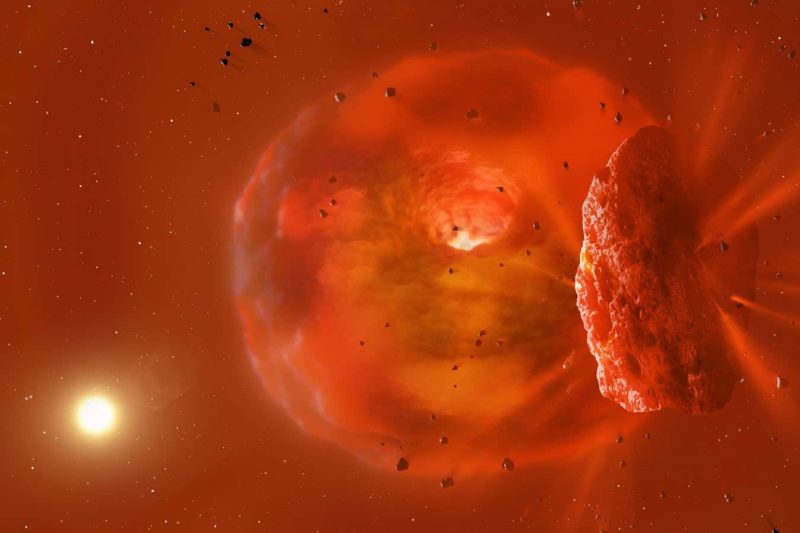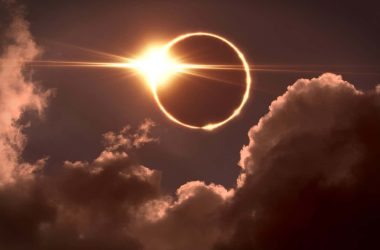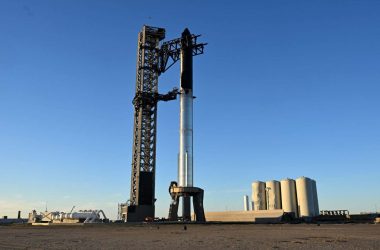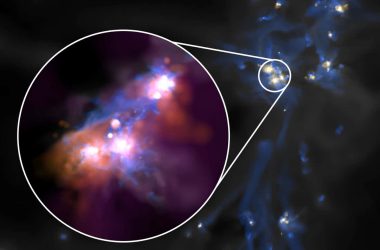In a star system located 1800 light years away from Earth, astronomers have witnessed a cataclysmic collision between two giant planets. The collision resulted in the planets being incinerated, leaving behind a glowing-hot doughnut-shaped disc of heated dust and gas. This event marks the first time that a planetary collision has been observed in real-time.
Discovery of the Collision
In 2021, scientists noticed a significant dimming of a sun-like star known as ASASSN-21qj. Further examination of previous observations revealed that the star had experienced a period of brightening three years prior to the dimming. The researchers, led by Matthew Kenworthy at Leiden University, propose that the cause of these changes was the collision of two ice giant planets within the star system.
The Colliding Planets
The two planets involved in the collision were estimated to be several times the mass of Earth and similar in size to Neptune. They orbited the star at a distance comparable to Jupiter’s orbit around our own sun. Upon impact, the planets would have been completely pulverized and transformed into molten matter. The remnants formed a massive ball of silica vapor, seven times wider than the sun.
Post-Collision Effects
As a result of the collision, a torus-shaped ring of debris and gas formed around the star. This ring reached scorching temperatures of around 700°C. The researchers suggest that the planets were rich in water vapor, making them ice giant planets like Neptune and Uranus. Over time, these remains may condense into a new planet surrounded by multiple moons.
Causes of the Collision
The exact cause of the collision between the two planets remains unclear. It is possible that their orbits were perturbed by either a passing star or another planet, ultimately leading to the collision. The energy released during the impact would have been equivalent to that of a small star burning for two years.
Significance and Future Research
This discovery provides evidence of planetary collisions occurring in the universe. Similar collisions have been theorized to explain phenomena such as the formation of Earth’s moon. Further observations of the star system, potentially using the James Webb Space Telescope, could confirm the collision theory. If successful, these observations may reveal additional insights into the aftermath of such collisions and the formation of new planets.








